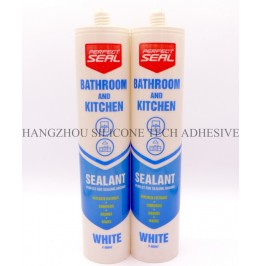Bathrooms are inherently humid spaces, with frequent exposure to water, steam, and condensation. Over time, this moisture can degrade even high-quality sealants, leading to mold growth, discoloration, or adhesion failure. Proper maintenance is essential to extend the lifespan of bathroom sealants and prevent costly repairs. Below are key strategies for preserving sealant integrity in persistently damp conditions.

Frequent checks help identify issues before they escalate, ensuring timely intervention.
Humidity and temperature fluctuations can cause sealant to shrink or crack over time. Inspect joints around bathtubs, showers, sinks, and tiles at least once a month. Look for small fissures or gaps where water might seep through. Even minor cracks can allow moisture to penetrate, weakening the bond between the sealant and substrate. Use a flashlight to examine hard-to-see areas, such as corners or behind fixtures.
Mold thrives in damp environments and often appears as black, green, or white spots along sealant lines. Pay close attention to areas near drains, faucets, or where water tends to pool. If mold is detected, clean it immediately using a non-abrasive method to avoid damaging the sealant. Persistent mold growth may indicate that the sealant is no longer effectively repelling moisture, requiring reapplication.
Over time, sealant may turn yellow, brown, or become tacky due to prolonged exposure to moisture, cleaning agents, or UV light. Discoloration is often a sign of chemical breakdown, while stickiness suggests incomplete curing or degradation. If the sealant feels soft or gummy to the touch, it may no longer provide a watertight seal and should be addressed promptly.
Harsh cleaning methods can accelerate sealant wear. Adopting gentle techniques ensures longevity.
Avoid acidic or alkaline cleaners, which can erode sealant over time. Instead, opt for mild, pH-neutral solutions designed for sensitive surfaces. Dilute the cleaner according to instructions and apply it with a soft cloth or sponge. For stubborn stains, let the cleaner sit for a few minutes before wiping it away. Rinse thoroughly with water to remove residue, as leftover detergent can attract dirt and promote mold growth.
Steel wool, rough scrub pads, or abrasive powders can scratch the sealant’s surface, creating entry points for moisture and bacteria. Instead, use microfiber cloths, cotton rags, or soft-bristled brushes for cleaning. For grout lines adjacent to sealant, choose a non-scratching grout brush and apply gentle pressure in a circular motion.
After showering or bathing, use a squeegee or absorbent towel to remove excess water from tiles, glass, and sealant lines. Pay special attention to corners and edges where water tends to accumulate. Allowing the area to air-dry completely reduces humidity levels and minimizes the risk of mold. If possible, run a bathroom fan or open a window to improve ventilation.
Controlling moisture levels is crucial for preventing sealant deterioration.
Exhaust fans help remove humid air from the bathroom, reducing condensation on surfaces. Ensure the fan is properly sized for the room (measured in cubic feet per minute, or CFM) and runs during and after showers. Set a timer to keep the fan running for at least 20 minutes post-shower to ensure thorough ventilation. Clean the fan regularly to prevent dust buildup, which can reduce its efficiency.
In regions with consistently high humidity, a dehumidifier can help maintain optimal moisture levels (ideally between 40% and 60%). Place the dehumidifier in the bathroom and empty its reservoir frequently to prevent bacterial growth. Some models offer automatic shutoff when the desired humidity level is reached, making them convenient for long-term use.
On dry days, open bathroom windows and doors to allow fresh air to circulate. This is especially effective after cleaning or showering, as it helps dissipate moisture and odors. If privacy is a concern, consider installing frosted glass or window treatments that allow airflow while maintaining discretion.
Mold not only damages sealant but also poses health risks. Immediate action is necessary.
For small mold spots, mix equal parts white vinegar and water in a spray bottle. Spray the affected area, let it sit for 10–15 minutes, then wipe clean with a damp cloth. Vinegar’s acidity helps kill mold spores without damaging the sealant. For larger infestations, use a hydrogen peroxide solution (3% concentration). Apply it directly to the mold, wait 10 minutes, and scrub gently with a soft brush.
If mold returns despite regular cleaning, the underlying sealant may be compromised. Check for hidden leaks or poor ventilation that could be contributing to the issue. In severe cases, remove and replace the affected sealant after thoroughly drying and disinfecting the area. Ensure the new sealant is mold-resistant and properly applied to create a watertight barrier.
To discourage mold, keep bathroom surfaces as dry as possible. After cleaning, apply a thin layer of mold-inhibiting spray (available at hardware stores) along sealant lines. These products create a protective barrier that resists mold and mildew. Additionally, reduce clutter in the bathroom, as items like shower curtains, loofahs, or toiletries can trap moisture and promote bacterial growth.
By implementing these practices, you can significantly extend the life of bathroom sealant in humid environments. Regular inspections, gentle cleaning, effective humidity control, and prompt mold removal work together to maintain a clean, functional, and aesthetically pleasing bathroom space.
Copyright 2019 by Hangzhou Silicone Tech Adhesive Co., Ltd. All rights reserved.
Bathroom Sealant | Acrylic Sealant | Dow Corning 795 | Aquarium Sealant | Dow Corning 732 | Clear Silicone Sealant | Polysulfide Sealant | Glazing Sealant | Mirror Sealant | IG Sealant
Powered by Onepound